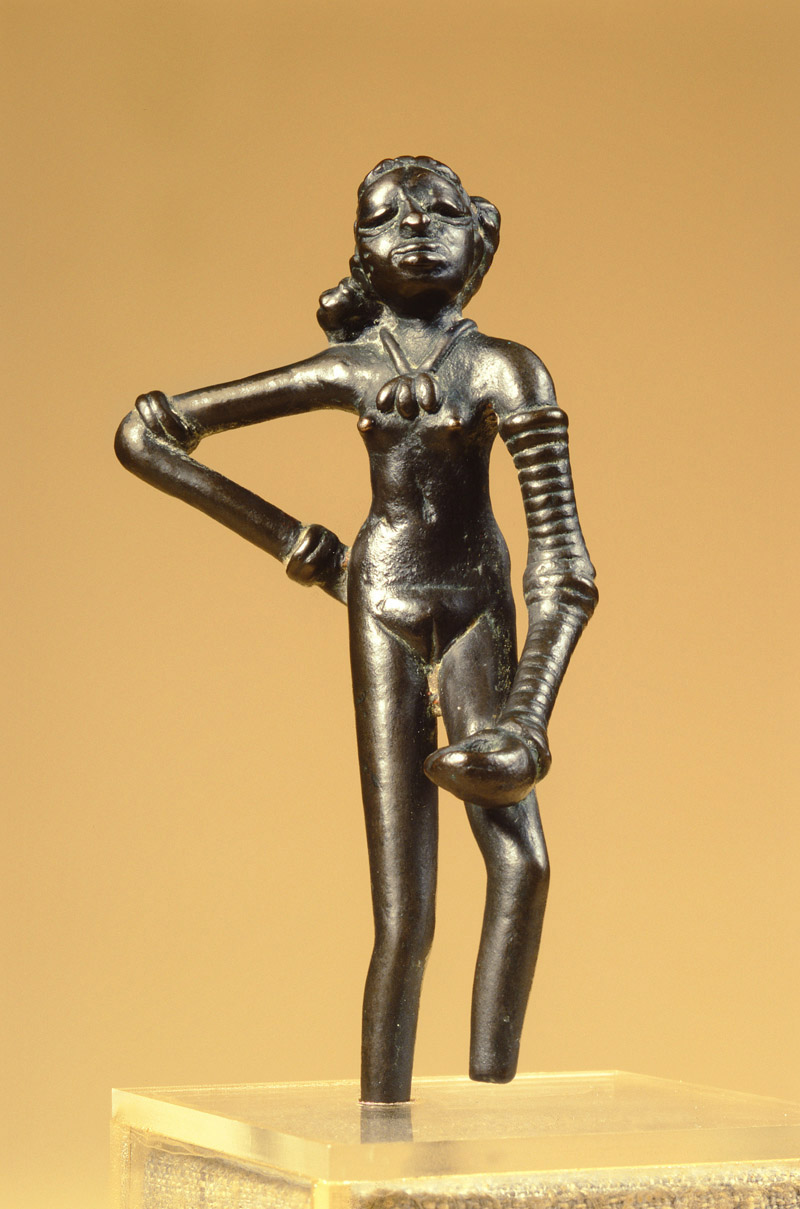Visual Source 2.3
Dancing Girl
Limited archeological evidence suggests that some urban women played important social and religious roles in the Indus Valley civilization. Figurines of women or goddesses are more common than those of men. Women, apparently, were buried near their mothers and grandmothers, while men were not interred with their male relatives. The great variety of clothing, hairstyles, and decorations displayed on female figurines indicates considerable class, ethnic, and perhaps individual variation.
Among the most delightful discoveries in the Indus Valley cities is the evocative statue shown in Visual Source 2.3. It is about four inches tall and dated to around 2500 B.C.E. This young female nude is known generally as the “dancing girl.” Cast in bronze using a sophisticated “lost wax” method, this statue provides evidence for a well-developed copper/bronze industry. The figure herself was portrayed in a dancer’s pose, her hair gathered in a bun and her left arm covered with bangles and holding a small bowl. Both her arms and legs seem disproportionately long. She has been described variously as a queen, a high-status woman, a sacred temple dancer, and a tribal girl. Although no one really knows her precise identity, she has evoked wide admiration and appreciation. Mortimer Wheeler, a famous British archeologist, described her as “a girl perfectly, for the moment, perfectly confident of herself and the world.” American archeologist Gregory Possehl, also active in the archeology of the Indus Valley civilization, commented: “We may not be certain that she was a dancer, but she was good at what she did and she knew it.”32

Question
What features of this statue may have provoked such observations?
Question
How do you react to this statue? What qualities does she evoke?
Question
What does Visual Source 2.3 suggest about views of women, images of female beauty, and attitudes about sexuality and the body?